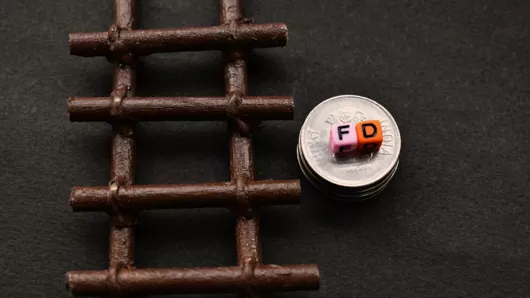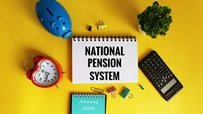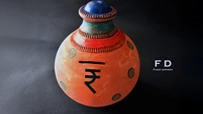FD Laddering: How to Maximize Your Returns with Fixed Deposit
Disclaimer: This blog is written for generic information only. The calculations given herein are for illustration purposes. Ujjivan SFB does not take any responsibility for the accuracy of the information mentioned herein.
October 05, 2025

Interest rates never stand still. Over the past few years, the Reserve Bank of India’s policy rate has zig-zagged to keep pace with inflation and economic growth, leaving everyday savers wondering whether to lock their money in a long-term fixed deposit (FD) or stay flexible. Put everything in a 5-year FD and you risk missing higher returns if rates rise next year. Keep it all in a short-term FD, and you might have to reinvest at lower rates if they fall.
A practical solution is FD laddering. Fixed Deposit laddering is a method of spreading your deposit across multiple FDs with staggered maturity dates. Instead of betting on a single rate or tenure, laddering balances liquidity, safety, and return.
In this guide, we’ll explore what FD laddering means, why it’s especially relevant in today’s economic climate, and how to build one for your own savings plan.
What is FD Laddering?
FD laddering is a smart way of investing in Fixed Deposits (FDs) by breaking your total FD amount into smaller deposits with different maturity periods instead of putting all your money into one FD.
For example, suppose you have ₹10 lakh to invest. Instead of a single FD, you create five deposits of ₹2 lakh each:
| FD | TENURE | MATURITY YEAR |
| 1 | 1 year | Year 1 |
| 2 | 2 years | Year 2 |
| 3 | 3 years | Year 3 |
| 4 | 4 years | Year 4 |
| 5 | 5 years | Year 5 |
When the first FD matures after one year, you can either use the funds or reinvest them for another 5-year term at the prevailing interest rate. Every year another FD matures, so you always have money coming up for renewal without breaking long-term deposits prematurely.
Key advantages built into this strategy:
Why FD Laddering Matters These Days
The current environment makes laddering more compelling than ever:
FD laddering gives savers a structured, low-risk plan to capture rising rates while maintaining steady access to cash—a smart strategy in an unpredictable economy.
How to Build Your FD Ladder
Creating an FD ladder is straightforward once you plan the amount, tenures, and renewal routine.
Step 1 – Decide the Total Corpus
Determine how much you can set aside for fixed deposits—money that you won’t need for daily expenses. For example, assume ₹10 lakh.
Step 2 – Choose Ladder Length & Intervals
Classic ladders use 1–5 year rungs, but you can customise:
Step 3 – Split the Amount
Divide your corpus equally or by goal. With ₹10 lakh, you might put ₹2 lakh each in 1-, 2-, 3-, 4-, and 5-year FDs.
Step 4 – Renewal Strategy
As each FD matures, reinvest it in the longest rung of the ladder (e.g., a fresh 5-year FD). This maintains a rolling ladder with one FD maturing every year.
Step 5 – Tax and Paperwork
Remember the TDS threshold: if total interest in a year exceeds ₹50,000 (₹1,00,000 for senior citizens), banks deduct 10% TDS unless you submit Form 15G/15H.
That said, Form 15G and Form 15H is applicable only for those whose income falls below the taxable limit.
FD Laddering Best Practices and Pitfalls
Before setting up your ladder, it helps to pause and plan. A little preparation ensures that each rung supports both liquidity and long-term growth.
Best Practices
Common Pitfalls to Avoid
A disciplined approach like this keeps your ladder flexible and profitable, letting you enjoy steady cash flow without unpleasant surprises. Use our Fixed Deposit Returns Calculator to compare returns pertaining to different tenures and plan your investments better.
Who Should Consider FD Laddering?
FD laddering works well for a wide range of savers, but it’s especially valuable for:
Final Thoughts
Start small—perhaps with a three-rung ladder across one-, two-, and three-year FDs—and expand as you grow comfortable. Review rates before every renewal, keep tax rules in mind, and track maturity dates.
FD laddering is a disciplined habit that can keep your savings working efficiently while giving you the liquidity and peace of mind every saver needs.
Disclaimer:
The contents herein are only for informational purposes and generic in nature. The content does not amount to an offer, invitation or solicitation of any kind to buy or sell, and are not intended to create any legal rights or obligations. This information is subject to updation, completion, amendment and verification without notice. The contents herein are also subject to other product-specific terms and conditions, as well as any applicable third-party terms and conditions, for which Ujjivan Small Finance Bank assumes no responsibility or liability.
Nothing contained herein is intended to constitute financial, investment, legal, tax, or any other professional advice or opinion. Please obtain professional advice before making investment or any other decisions. Any investment decisions that may be made by the you shall be at your own sole discretion, independent analysis and evaluation of the risks involved. The use of any information set out in this document is entirely at the user’s own risk. Ujjivan Small Finance Bank Limited makes no representation or warranty, express or implied, as to the accuracy and completeness for any information herein. The Bank disclaims any and all liability for any loss or damage (direct, indirect, consequential, or otherwise) incurred by you due to use of or due to investment, product application decisions made by you on the basis of the contents herein. While the information is prepared in good faith from sources deemed reliable (including public sources), the Bank disclaims any liability with respect to accuracy of information or any error or omission or any loss or damage incurred by anyone in reliance on the contents herein, in any manner whatsoever.
To know more about Ujjivan Small Finance Bank Products Visit:"https://www.ujjivansfb.in"
All intellectual property rights, including copyrights, trademarks, and other proprietary rights, pertaining to the content and materials displayed herein, belong
to Ujjivan Small Finance Bank Limited or its licensors. Unauthorised use or misuse of any intellectual property, or other content displayed herein is strictly prohibited and the same is not intended for distribution to, or use by, any person in any jurisdiction where such distribution or use would (by reason of that person’s nationality, residence or otherwise) be contrary to law or registration or would subject Ujjivan Small Finance Bank Limited or its affiliates to any licensing or registration requirements.
FAQs
1. Is FD laddering better than a recurring deposit (RD)?
Both are designed to serve different purposes. While RD is an excellent option for building emergency fund, FDs are meant to offer safe and secure long-term returns.
2. How many rungs should my ladder have?
Three to five rungs are common. More rungs mean more frequent maturities and smoother cash flow but slightly more tracking effort.
3. What if interest rates fall after I set up my ladder?
Only the maturing FDs will be renewed at the lower rate; the rest continue at their original, higher rates, cushioning the impact.
4. Are there tax advantages?
Interest from FDs is taxable as per your income slab. Banks deduct TDS if annual interest exceeds ₹50,000 (₹1,00,000 for senior citizens). You can book Tax Saver FDs, which can help you claim tax deduction up to ₹1.5 lakh under Section 80C of the Income Tax Act, provided you have opted for the old tax regime.








